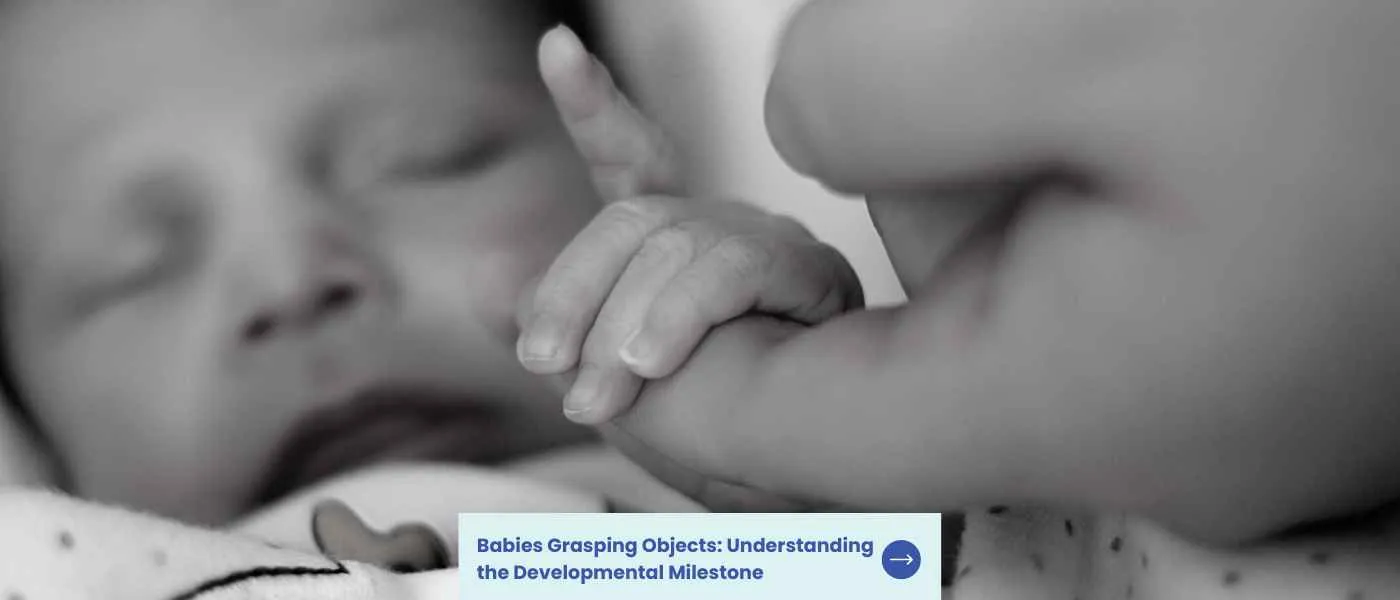Babies grasping objects signals the dawn of discovery and interaction in their developmental journey. This instinctual yet evolving ability lays the groundwork for a lifetime of hands-on learning and manipulation.
If you’ve been captivated by your baby’s journey from clumsy swipes to purposeful grabs, you’re observing layers of motor development unfold.
Grounded in deep insights into infant motor skills, I’ve put together an encompassing look into the stages and nuances of baby grasping.
Venture into this guide with me, and together let’s delve into the fascinating process that propels babies from passive observers to active participants in their world.
Key Takeaways on Babies Grasping and Banging Things
Grasping development in babies — Babies have a natural reflex to grasp, but as they grow and develop, they learn to control their movements and use their hands to explore the world around them.
Encouraging grasping development — Parents can help encourage their baby’s grasping development by providing plenty of opportunities to practice. This can include offering a variety of toys and objects to explore, providing a safe and comfortable space for play, and offering gentle guidance and encouragement as their baby learns to control their movements and develop their grasping skills.
Influential factors — Factors that influence the development of grasping skills include age, object size and shape, hand dominance, and sensory stimulation.
Grasping Objects Developmental Milestones
As babies grow and develop, they reach different milestones that indicate their progress. One of these milestones is grasping objects. Here are some of the developmental milestones related to grasping:
Grasping Objects & Fine Motor Skills
From birth, babies have the ability to grasp objects, but their grasp is initially a basic reflex. Over time, they develop more refined fine motor skills that allow them to grasp objects more deliberately and with greater control. Here are some of the key milestones in the development of fine motor skills related to grasping:
- 1-3 months: Infant attempts to swipe or hit objects.
- 4 months: Ulnar palmar grasp. This grasp is the first step toward more refined grasping.
- 5-6 months: Radial palmar grasp. This grasp allows babies to pick up smaller objects and transfer them from hand to hand.
- 7-8 months: Pincer grasp. This grasp involves using the thumb and index finger to pick up small objects.
- 9-12 months: Three-jaw chuck grasp. This grasp involves using the thumb, index finger, and middle finger to pick up objects.
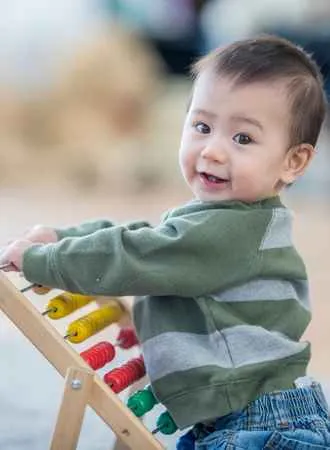
Grasping Objects & Gross Motor Skills
In addition to fine motor skills, babies also develop gross motor skills related to grasping. Gross motor skills involve the use of larger muscle groups and are important for overall physical development. Here are some of the key milestones in the development of gross motor skills related to grasping:
4-5 months
Baby can sit up with support and reach for objects
6-7 months
Baby’s grasping reflex becomes clear. They can sit up independently and grasp things with both hands.
8-9 months
Baby can crawl and reach for objects while crawling.
10-12 months
Baby can stand and reach for objects while standing.
It’s important for parents and caregivers to understand that each baby develops at their own pace. The time babies start grabbing things depends on the baby themselves/
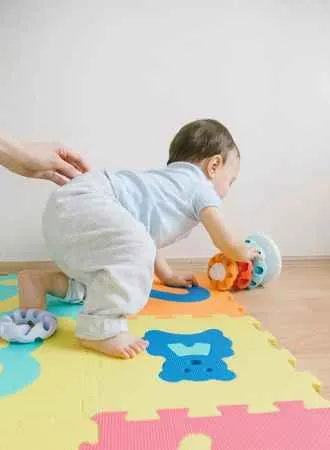
Types of Grasping
As babies develop, their ability to grasp objects changes. There are several types of grasping that babies go through before they can pick up and hold objects with precision.
Palmar Grasp
The palmar grasp is the earliest type of grasp that babies develop, usually around 3-4 months old. It involves using the palm of the hand to grasp objects, similar to how adults might hold a baseball. At this stage, babies lack the dexterity to use tiny fingers to pick up small objects, so they rely on this gross grasp to hold onto toys and other items.
Pincer Grasp
The pincer grasp is a more advanced type of grasp that involves using the thumb and index finger to pick up small objects. Babies typically develop this grasp around 9-10 months old. At first, they may use a “crude” pincer grasp, where they use the side of their index finger to pinch objects. Over time, they will develop a “superior” pincer grasp, which involves using the tips of their fingers to pick up objects.
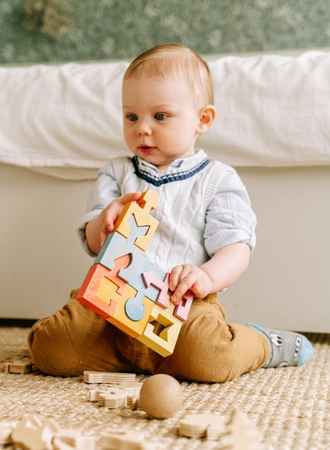
Raking Grasp
The raking grasp is a transitional grasp that babies use as they develop their pincer grasp. It involves using the fingers to rake objects towards the palm of the hand, where they can be held using the palmar grasp. Babies typically use this grasp around 6-7 months old, as they start to develop the coordination needed for more precise grasping.
As babies continue to develop, they will refine their grasping skills and be able to pick up and hold objects with greater precision. Understanding the different types of grasping can help parents and caregivers support babies as they learn and grow.
Factors Affecting Grasping
Age
According to the Centers for Disease Control, grasping is one of the most important milestones in a baby’s development that typically occurs between 3-6 months of age. Initially, babies use a reflexive grasp, where they close their fingers around an object that touches the palm of their hand. As they develop, they begin to use a voluntary grasp, where they intentionally reach for and grasp objects. By 9-12 months, they can use a pincer grasp, where they use their thumb and index finger to pick up small objects.

Object Size and Shape
The size and shape of an object can affect a baby’s ability to grasp it. Small objects may be difficult to pick up, while large objects may be too heavy or awkward to hold. Objects with irregular shapes may be harder to grasp than those with smooth, rounded surfaces. Additionally, the texture of an object can influence how a baby grasps it. For example, a slippery object may be harder to hold onto than a rough one.
Hand Dominance
Just like adults, babies may have a dominant hand that they prefer to use for grasping. This preference may become apparent around 6-9 months of age. However, it’s important to note that some babies may not show a clear hand preference until they are older.
Overall, there are several factors that can influence a baby’s ability to grasp objects. Understanding these factors can help parents and caregivers choose appropriate toys and activities to support their child’s development.
Activities to Encourage Grasping
Sensory Play
Sensory play is a great way to encourage babies to explore and grasp objects. Sensory play activities can include playing with different textures, colors, and shapes. Some examples of sensory play activities that can encourage grasping include:
- Filling a bin with rice or beans and hiding small toys or objects for the baby to find and grasp. You can also encourage your baby to start passing objects to further develop their finger skills.
- Providing different textured fabrics for the baby to feel and grasp, such as silk, velvet, and fur
- Using a sensory ball pit for the baby to explore and grasp different balls
- When your baby is in the baby gym, use toys with different textures.
- Encourage finger feeding during mealtimes. Offer baby lots of solid foods of varying textures and sizes.
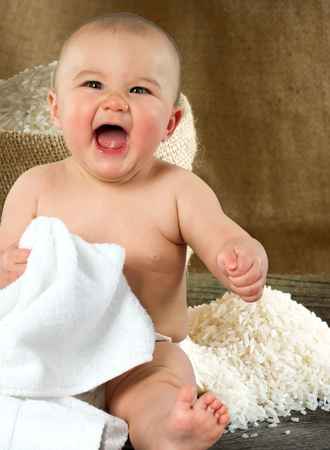
Manipulative Toys
Manipulative toys are designed to help babies develop their grasping skills. These toys often have different textures, colors, and shapes that can help stimulate the baby’s senses and encourage grasping. Some examples of manipulative toys that can encourage grasping include:
- Rattles: Rattles are great for encouraging grasping and also provide auditory stimulation for the baby
- Stacking Rings: Stacking rings can help babies develop their grasping and hand-eye coordination skills
- Soft Blocks: Soft building blocks are easy for babies to grasp and can also help with spatial awareness and problem-solving skills
Tummy Time
Tummy time is an important activity for babies to help develop their grasping skills. When babies learn how to move while on their stomachs, they will try to reach for objects with their own hands.
- Placing toys or objects in front of the baby to encourage the baby’s hands to reach and grasp
- Using a mirror to encourage the baby to lift their head and reach for their reflection
- Providing a soft, textured mat for the baby to explore and grasp

FAQS on Babies Grabbing Things
Why do babies grab everything?
Babies grab everything as a natural part of their development. Grasping objects helps them improve their fine motor skills, hand-eye coordination, and muscle strength. It also allows them to explore their environment, learn about different textures and shapes, and understand cause and effect.

